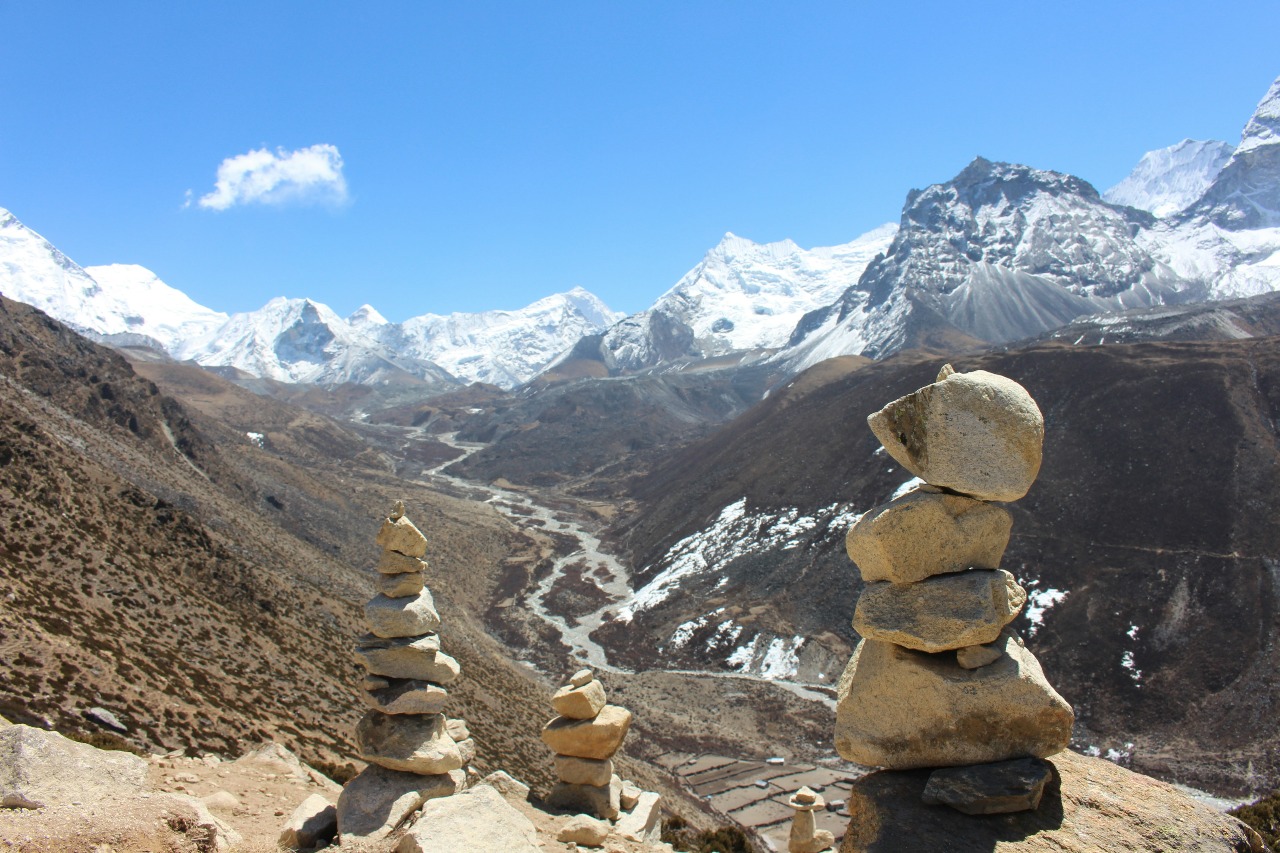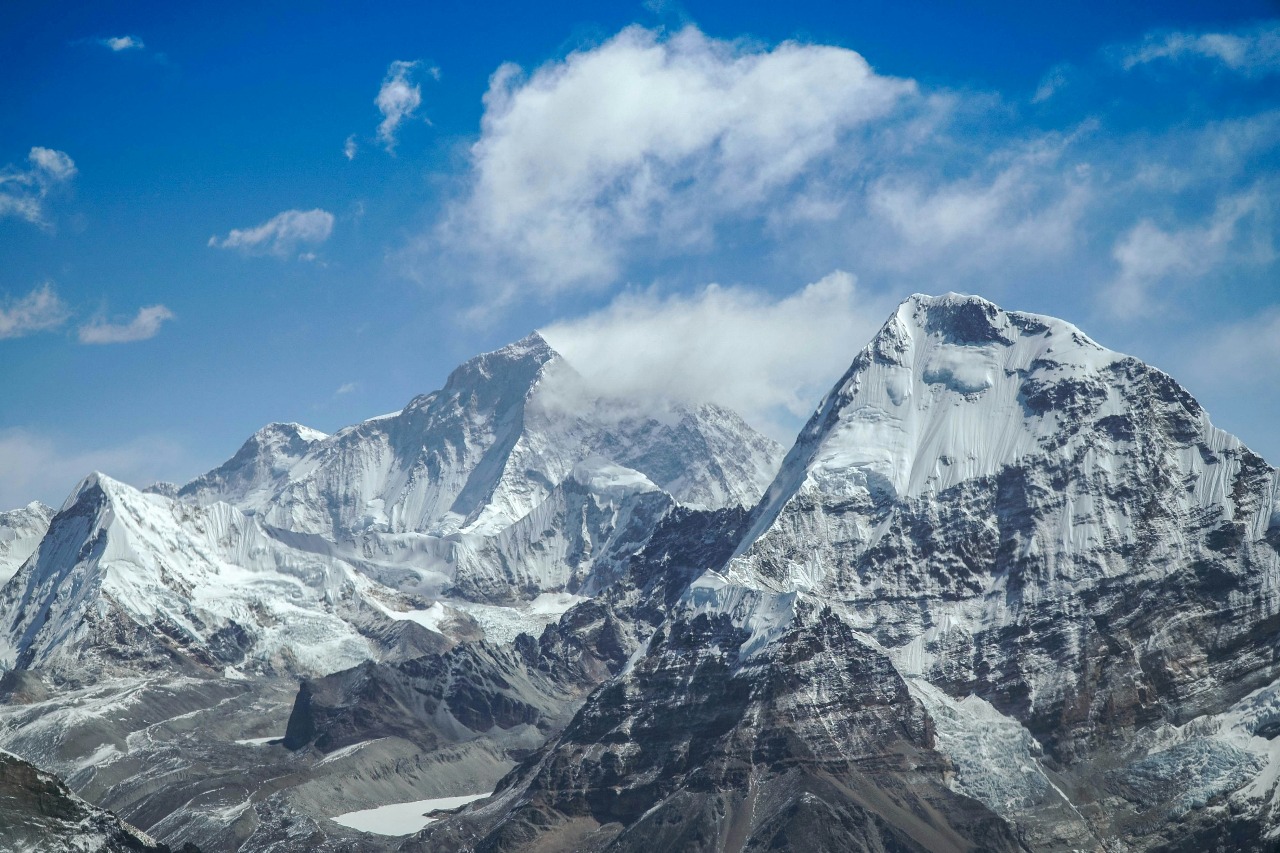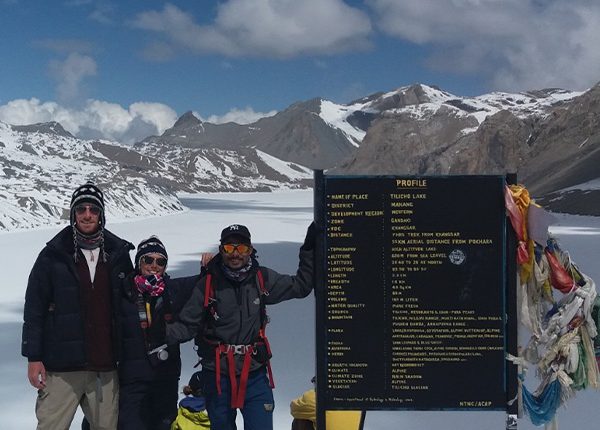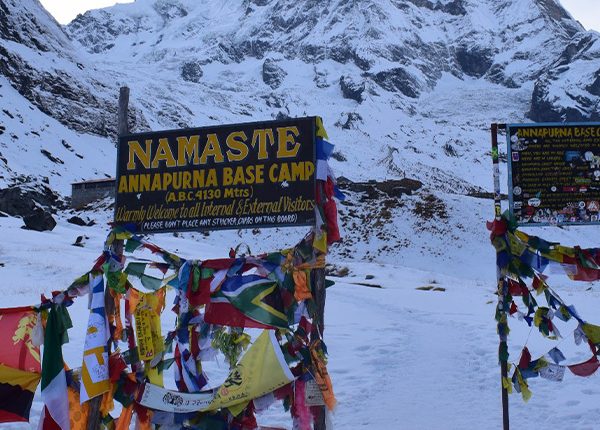This exhilarating expedition takes you on a high-altitude journey to summit three of Nepal’s most iconic trekking peaks: Mera Peak (6,461m/21,192ft), Island Peak (6,189m/20,305ft), and Lobuche East Peak (6,119m/20,070ft)—each offering unique challenges and unforgettable Himalayan panoramas.
The adventure begins with Mera Peak, Nepal’s highest trekking peak, located in the remote Hinku Valley. Though technically less demanding, its altitude makes it a formidable first ascent, perfect for building acclimatization and stamina. From there, you’ll traverse the wild and isolated Honku Valley, crossing the dramatic Amphu Lapcha Pass (5,845m/19,177ft)—an alpine highlight of the expedition.
Next is Island Peak, also known as Imja Tse, nestled in the heart of the Khumbu region. More technical than Mera, Island Peak demands the use of ropes and fixed lines, offering climbers a chance to hone their alpine skills against the backdrop of towering giants like Lhotse and Ama Dablam.
The final ascent is Lobuche East, the most technical of the three. With its steep ridgelines and mixed terrain, it offers a rewarding finale for those seeking to test their endurance, skill, and determination at over 6,000 meters.
Together, these peaks create a thrilling, progressive mountaineering experience—perfect for adventurous trekkers looking to gain high-altitude climbing experience in some of the Himalayas’ most breathtaking and remote landscapes.





